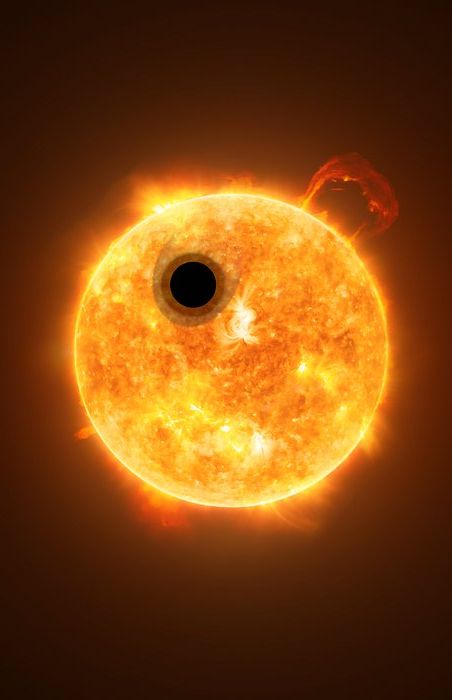An international team of researchers from the University of Bern and the University of Geneva and the National Centre of Competence in Research (NCCR) examined the atmosphere of one of the most extreme known planets.
The findings of this hot, Jupiter-like planet, which was discovered using the CHEOPS satellite telescope, may help astronomers grasp the intricacies of many other exoplanets, including Earth-like planets.
The Earth’s atmosphere is not a homogeneous envelope but a series of unique layers, each with its own set of attributes. The troposphere, which extends from sea level to the highest mountain peaks, contains most of the water vapor and is consequently the layer in which most meteorological events occur. The stratosphere is the layer above it that houses the famed ozone layer, protecting humans from the Sun’s damaging UV radiation.
An international team of researchers headed by the University of Lund reveals for the first time in a new study published in Nature Astronomy that the atmosphere of one of the most extreme known planets may feature similarly separate layers—albeit with very different properties.
WASP-189b is a planet 322 light-years from Earth outside our solar system. Extensive investigations with the CHEOPS satellite telescope in 2020 showed that the planet is 20 times closer to its host star than Earth is to the Sun and that it has a daytime temperature of 3200 degrees Celsius. Recent studies with the HARPS spectrograph at Chile’s La Silla Observatory have now enabled astronomers to take a closer look at the atmosphere of this Jupiter-like planet for the first time.
Bibiana Prinoth, primary author of the research and Ph.D. student at Lund UniversitY, says:
“We measured the light coming from the planet’s host star and passing through the planet’s atmosphere. The gasses in its atmosphere absorb some of the starlight, similar to Ozone absorbing some of the sunlight in Earth’s atmosphere, and thereby leave their characteristic ‘fingerprint. With the help of HARPS, we were able to identify the corresponding substances.”
According to the researchers, iron, chromium, vanadium, magnesium, and manganese were among the gases that left their imprints in the atmosphere of WASP-189b.
An “Ozone layer” on a Scorching-Hot Planet?
One especially intriguing chemical discovered by scientists is titanium oxide, a gas containing titanium. While titanium oxide is very rare on Earth, it may play a crucial function in the atmosphere of WASP-189b, similar to how Ozone does in ours.
Ultraviolet radiation, for example, is absorbed by titanium oxide. The observation might therefore point to a layer in WASP-189b’s atmosphere that interacts with solar irradiation in the same way as the Ozone layer does on Earth, as research co-author Kevin Heng, an astrophysics professor at the University of Bern and a member of the NCCR PlanetS, adds.
The researchers discovered signs of such a layer and other layers on the ultra-hot Jupiter-like planet.
Through our investigation, the scientists discovered that the ‘fingerprints’ of the various gasses were somewhat changed in comparison to their expectations.
They suspect that high winds and other mechanisms are responsible for these changes.
And because different gas fingerprints were modified in different ways, scientists believe this indicates that they exist in different layers—similar to how the fingerprints of water vapor and Ozone on Earth would appear differently altered from a distance because they mainly occur in different atmospheric layers, as Prinoth explains.
These findings might transform the way astronomers look for exoplanets.
A New Perspective on Exoplanets
In the past, astronomers often thought that exoplanet atmospheres exist as a uniform layer and attempted to interpret them as such. However, our findings show that even the atmospheres of heavily irradiated massive gas planets contain complex three-dimensional structures, as research co-author and senior associate professor at Lund University Jens Hoeijmakers states.
Kevin Heng concludes that understanding these and other sorts of planets, even those more comparable to Earth, requires an appreciation for the three-dimensional character of their atmospheres. Innovations in data analysis methods, computer modeling, and basic atmospheric theory are required













Leave a Reply